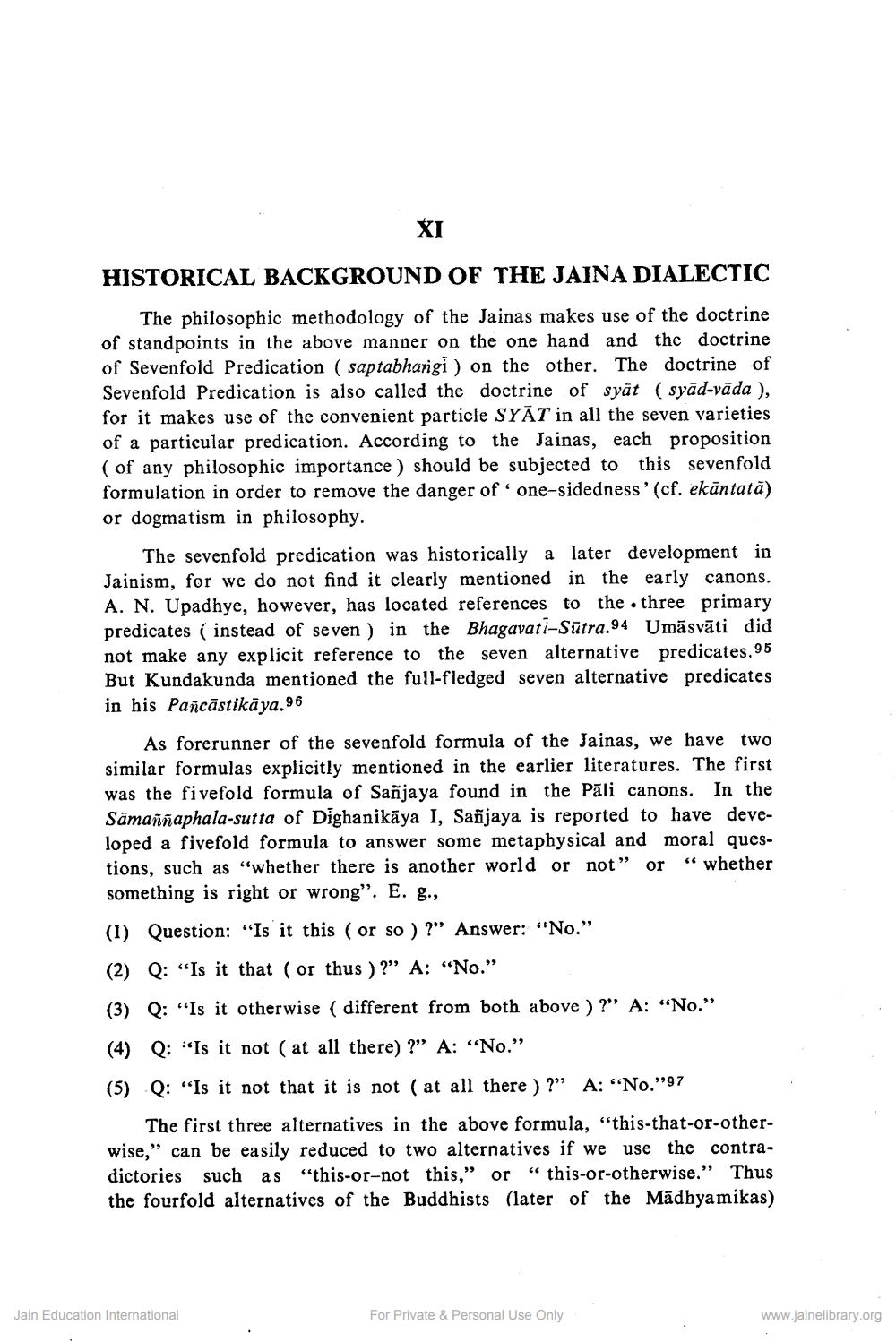________________
HISTORICAL BACKGROUND OF THE JAINA DIALECTIC
The philosophic methodology of the Jainas makes use of the doctrine of standpoints in the above manner on the one hand and the doctrine of Sevenfold Predication ( saptabhangi) on the other. The doctrine of Sevenfold Predication is also called the doctrine of syāt ( syād-vāda ), for it makes use of the convenient particle SYĀT in all the seven varieties of a particular predication. According to the Jainas, each proposition (of any philosophic importance ) should be subjected to this sevenfold formulation in order to remove the danger of one-sidedness' (cf. ekāntată) or dogmatism in philosophy.
The sevenfold predication was historically a later development in Jainism, for we do not find it clearly mentioned in the early canons. A. N. Upadhye, however, has located references to the three primary predicates ( instead of seven ) in the Bhagavati-Sūtra.94 Umāsvāti did not make any explicit reference to the seven alternative predicates.95 But Kundakunda mentioned the full-fledged seven alternative predicates in his Pancāstikāya.96
As forerunner of the sevenfold formula of the Jainas, we have two similar formulas explicitly mentioned in the earlier literatures. The first was the fivefold formula of Sañjaya found in the Pāli canons. In the Sāmaññaphala-sutta of Dighanikāya I, Sañjaya is reported to have developed a fivefold formula to answer some metaphysical and moral questions, such as "whether there is another world or not” or “whether something is right or wrong". E. g., (1) Question: "Is it this (or so ) ?" Answer: "No." (2) Q: “Is it that (or thus ) ?" A: "No." (3) Q: "Is it otherwise ( different from both above ) ?" A: "No." (4) Q: "Is it not ( at all there) ?" A: "No." (5) Q: "Is it not that it is not ( at all there ) ?" A: "No."97
The first three alternatives in the above formula, "this-that-or-otherwise," can be easily reduced to two alternatives if we use the contradictories such as “this-or-not this,” or “this-or-otherwise.” Thus the fourfold alternatives of the Buddhists (later of the Mādhyamikas)
Jain Education International
For Private & Personal Use Only
www.jainelibrary.org




